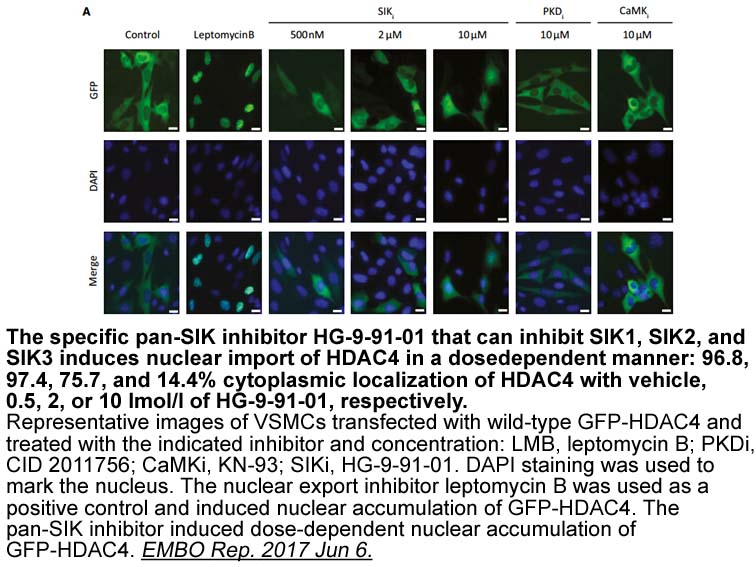Archives
Since non lipoprotein derived free cholesterol is
Since non-lipoprotein-derived free cholesterol is recycled from the plasma membrane through the endosomal system through receptor-independent mechanisms, we wanted to determine whether ABCA2 could alter the trafficking of this source of free cholesterol. Our approach was to measure the effect of mobilizing cholesterol at the plasma membrane by reducing its association with the sphingolipid sphingomyelin and measuring free cholesterol trafficking to the plasma membrane for esterification by ACAT. In this experiment we radiolabeled Imipramine hydrochloride overnight to equilibrium with [3H]cholesterol and then treated cells over several hours with bacterial sphingomyelinase (beta SMase) that selectively hydrolyzes plasma membrane sphingomyelin to ceramide. Increased ceramide levels displace cholesterol from membrane phospholipids and enhance its delivery to the ER for esterification [62], [63]. We observed that under these conditions, ABCA2 overexpression reduced cholesteryl ester formation with an increasing duration of βeta SMase treatment, compared to control N2a cells [61], [64]. In other experiments we determined the effect of depletion of endogenous ABCA2 by RNAi treatment, beta SMase mobilization of plasma membrane cholesterol, cholesterol trafficking to the ER and cholesterol esterification. We utilized the rat schwannoma cell line, D6P2T that expresses high levels of endogenous ABCA2 and stably expresses a lamin control RNAi and a D6P2T cell that stably expresses a rat ABCA2-specific RNAi to silence ABCA2 expression. In contrast to the ABCA2 overexpression studies, reduction in endogenous ABCA2 by RNAi increased the basal level as well as the beta SMase-treated level of cholesteryl ester formation [64]. These studies indicated that changes in ABCA2 expression level were sufficient to modulate non-lipoprotein-derived free cholesterol trafficking t o the ER for esterification. Interestingly, addition of the oxysterol, 25-hydroxycholesterol (25-HC), increased the mobilization of free cholesterol by forcing its displacement from membrane phospholipids [65], [66] and increased cholesterol esterification in both N2a cells and N2a cells overexpressing ABCA2. Importantly, the magnitude of the increase in cholesteryl ester formation mediated by 25-HC alone could be reduced to the level of control untreated N2a cells by co-culture in 25-HC/U18666a containing medium. These data indicated that a fraction of the 25-HC-released cholesterol trafficked through an U18666a-sensitive compartment, i.e., the LE/LY [64].
o the ER for esterification. Interestingly, addition of the oxysterol, 25-hydroxycholesterol (25-HC), increased the mobilization of free cholesterol by forcing its displacement from membrane phospholipids [65], [66] and increased cholesterol esterification in both N2a cells and N2a cells overexpressing ABCA2. Importantly, the magnitude of the increase in cholesteryl ester formation mediated by 25-HC alone could be reduced to the level of control untreated N2a cells by co-culture in 25-HC/U18666a containing medium. These data indicated that a fraction of the 25-HC-released cholesterol trafficked through an U18666a-sensitive compartment, i.e., the LE/LY [64].
Basal ABCA2 expression is regulated by general transcription factors
In order to understand the mechanisms responsible for regulating the transcription of the human ABCA2 gene, the basal promoter and cis-DNA regulatory control elements have been determined. Over 5 kilobases of the ABCA2 gene containing DNA control elements was analyzed and the basal promoter to 321 base pairs upstream of the ATG (methionine) start codon demonstrated a functional role for two GC-rich boxes containing overlapping early growth response protein-1 (EGR-1) and Sp1 binding sites [14]. When oligonucleotides containing overlapping EGR-1/Sp1 sites were incubated with nuclear extracts from BE(2)-M17 human neuroblastoma cells, binding the Sp1, Sp3 and Sp4 transcription factors was found. When these cells were treated with a protein kinase C activator, phorbol 12-myristate 13-acetate (PMA), inducible expression and binding of the EGR-1 transcription factor to the two GC-boxes were detected. Transfection of Sp1 SP3 or Sp4 expression constructs into Drosophila S2 insect cells, which do not express endogenous Sp-factors, induced dose-dependent increases in the expression of the human ABCA2 promoter but transfection of an EGR-1 expression construct alone failed to activate transcription. Co-transfection of an EGR-1 expression construct and an ABCA2 reporter construct into cells resulted in a dose-dependent reduction in expression of the ABCA2 basal promoter. The results from these studies suggested that Sp-factors and Egr-1 factors compete for binding to the GC-boxes in the proximal human ABCA2 promoter to regulate its transcription. This mechanism has also been established for other genes, e.g., SREBP-1a [67]; β(1)-Adrenergic Receptor [68] and Protein-tyrosine phosphatase 1B [69]. Understanding of the regulation of ABCA2 expression may lead to the identification of molecular targets for therapeutic intervention to prevent or ameliorate diseases due to altered expression of ABCA2.